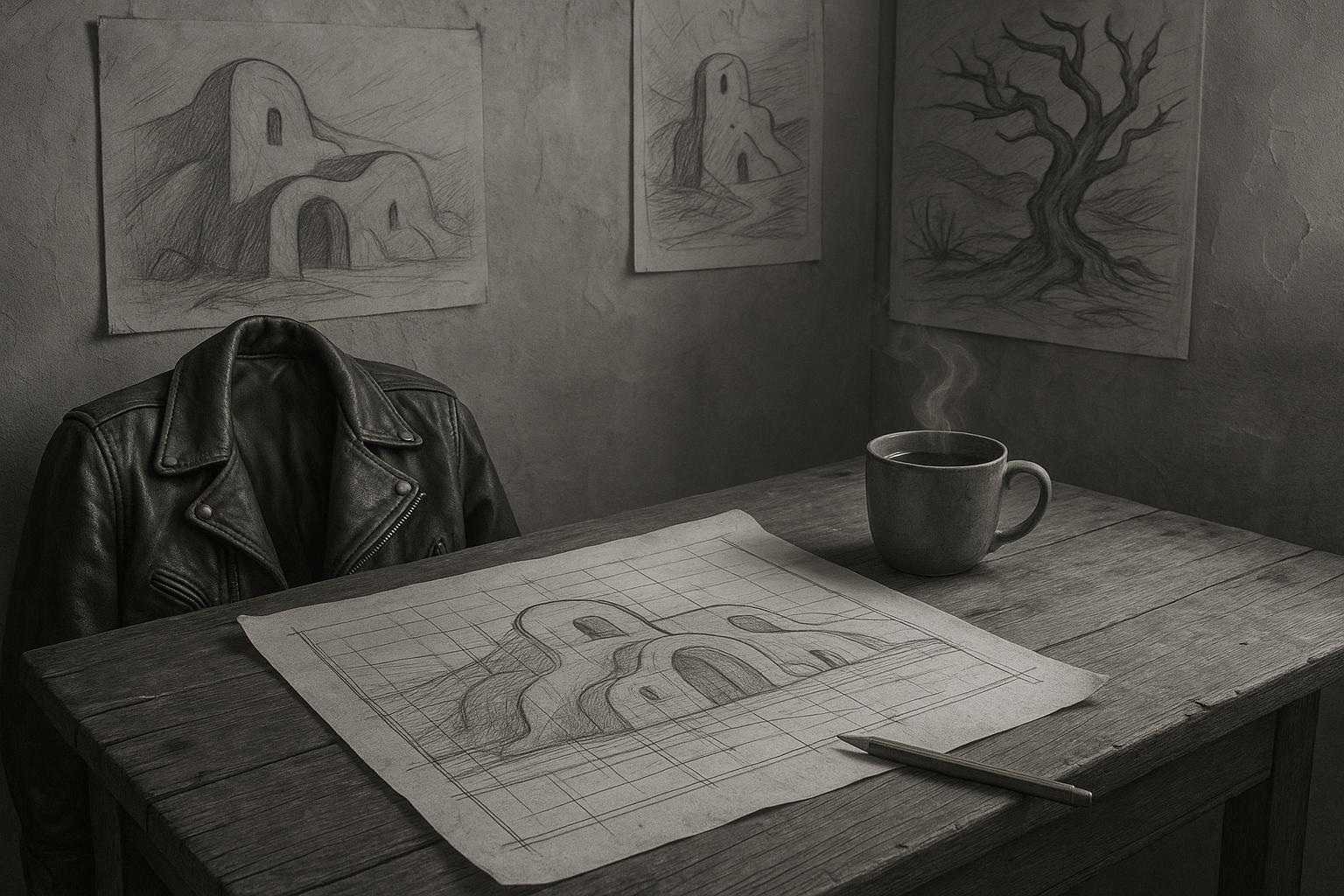As the autumn leaves begin to turn, a vibrant array of architectural exhibitions is opening across North America, Mexico, and beyond, inviting audiences to engage with architecture as a conduit of memory, materiality, and speculative futures. This season's shows collectively reflect on modernism’s impact, industrial and ecological histories, and the intimate spaces of domestic life, while also unearthing overlooked narratives and reconsidering preservation and regeneration in shaping future urban environments. The exhibitions span a diverse range of media including models, photographs, prints, collages, and immersive installations, offering a rich landscape where architecture is not merely built form, but a medium for cultural reckoning and innovative imagining.
One of the standout exhibitions is Sonoran Shapes + Structures: Desert-Inspired Architecture and Design at the Chandler Museum in Arizona, running through early February 2026. This exhibit explores how architects such as Frank Lloyd Wright and Paolo Soleri harmonised their organic design philosophies with the unique conditions and aesthetic qualities of the Sonoran Desert. Presented in partnership with the Organic Architecture + Design Archives, the exhibition delves into site-specific architectural responses that embrace the desert landscape’s light, materiality, and environmental context. The show invites visitors to reconsider the desert not as a harsh backdrop but as an inspiring partner in architectural creation, highlighting an enduring dialogue between built form and natural ecology. This approach resonates with ongoing architectural practices in the region like the Health Sciences Education Building in Phoenix by CO Architects, whose design similarly reflects the desert’s climatic and geomorphic features through courtyard massing inspired by slot canyons and shading strategies that modulate daylight and thermal gain. Such designs underscore a sustainable dialogue between architecture and environment, rooted in local vernacular and innovation.
Beyond the American Southwest, exhibitions take a critical eye toward complex histories and identities. At Cornell University, Baroque, The Soul of Brazil: Between Extraction and Expression investigates the transformation of European baroque architecture into a distinct Brazilian style along the Royal Road during the colonial period. Through photography, sketches, and essays, the show probes how architecture negotiates social hierarchies, colonial legacies, and national identity, revealing the layered narratives inscribed within built environments.
On the Pacific Coast, the Modern Vernacular exhibition at UC Berkeley spotlights Asian American architects and landscape architects who contributed profoundly but often invisibly to midcentury modernism in Northern California. Featuring figures such as Kinji Imada and Mai Kitazawa Arbegast, the show contextualizes their work within broader racial histories and cultural experiences, intersecting architectural innovation with issues of identity and representation.
Environmental and infrastructural themes are a strong current this fall. USC’s Margins as Method invites reconsideration of urban flood infrastructure along the Los Angeles River as ecological and communal assets rather than mere engineering constraints. Meanwhile, SCI-Arc’s Architecture After the Fires: LA in Progress addresses wildfire resilience by showcasing experimental architectural strategies aimed at building safely within fire-prone zones. These exhibitions respond urgently to climatic challenges, blending ecological sensitivity with social inclusivity.
Cultural preservation is another focal area. MIT’s Ink, Stone, and Silver Light documents a century of heritage preservation efforts in Aleppo, Syria, through manuscripts, photography, and architecture, highlighting resilience amid conflict and the role of architecture in sustaining community identity. Similarly, the Hiroshima Architecture Exhibition celebrates architecture’s societal role via works that reflect on the Seto Inland Sea’s heritage while confronting contemporary cultural and environmental issues.
The season also honours design innovators and specific architectural elements. The Museum of Wisconsin Art’s Frank Lloyd Wright: Modern Chair Design exhibition brings attention to the architect’s lesser-known furniture legacy, reconstructing lost designs to shed light on his holistic approach to modern living. At USC, Doris Sung: New Thermobimetal Studies showcases cutting-edge research into responsive building skins that adapt dynamically to temperature changes, pointing to future-forward possibilities in sustainable facade technologies.
Intersecting domesticity with conceptual exploration, exhibitions like Mapping the Middle in New York and Mexico City’s LIGA 41: Unidad Vecinal rethink home spaces as dynamic, collective stages where public and private life intermingle. Meanwhile, photo-centric shows such as London’s Bad Language and Yale’s Paparazza Moderna reveal the tensions, rivalries, and overlooked contributions behind iconic modernist architecture, blending personal narratives with architectural history.
Finally, several exhibitions delve into materiality’s cultural and ecological dimensions. Harvard’s Material Cultures: Steel and Our Entangled Present in Gary, Indiana reflects on the industrial and environmental costs of steel production, reframing Gary’s post-industrial landscape as fertile ground for innovative regeneration rather than decay.
Together, these varied exhibitions form a compelling cultural moment that uses architecture as a prism to interrogate history, identity, environment, and future possibilities. From desert-inspired organic design and baroque legacies to resilient infrastructure and material regeneration, the season’s offerings invite critical reflection and creative engagement with the world built—and yet to be built—around us.
📌 Reference Map:
- Paragraph 1 – [1]
- Paragraph 2 – [1], [2], [3], [4], [5], [6], [7]
- Paragraph 3 – [1]
- Paragraph 4 – [1]
- Paragraph 5 – [1]
- Paragraph 6 – [1]
- Paragraph 7 – [1]
- Paragraph 8 – [1]
- Paragraph 9 – [1]
Source: Noah Wire Services
